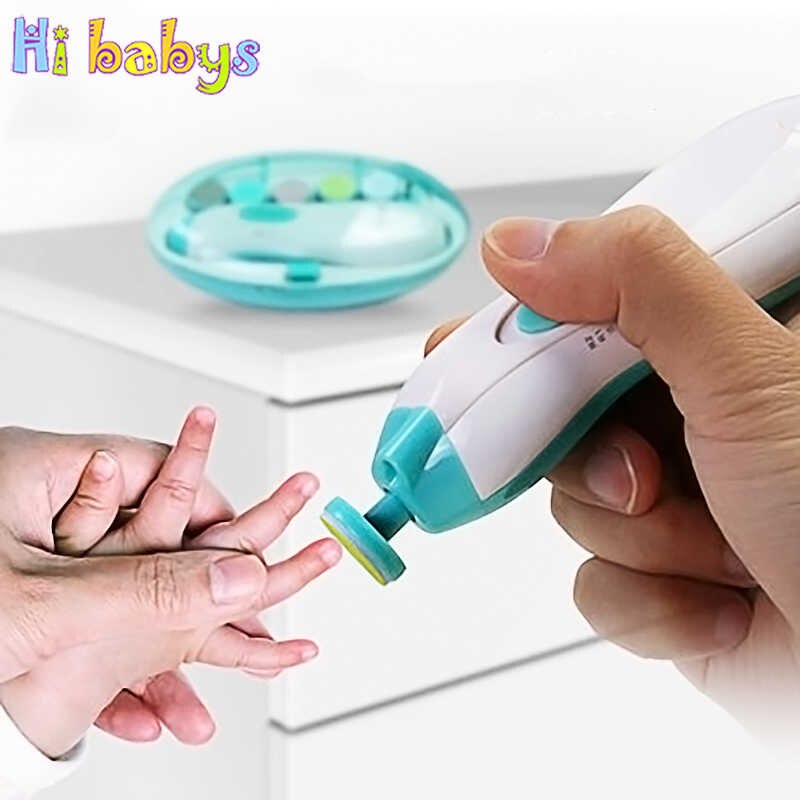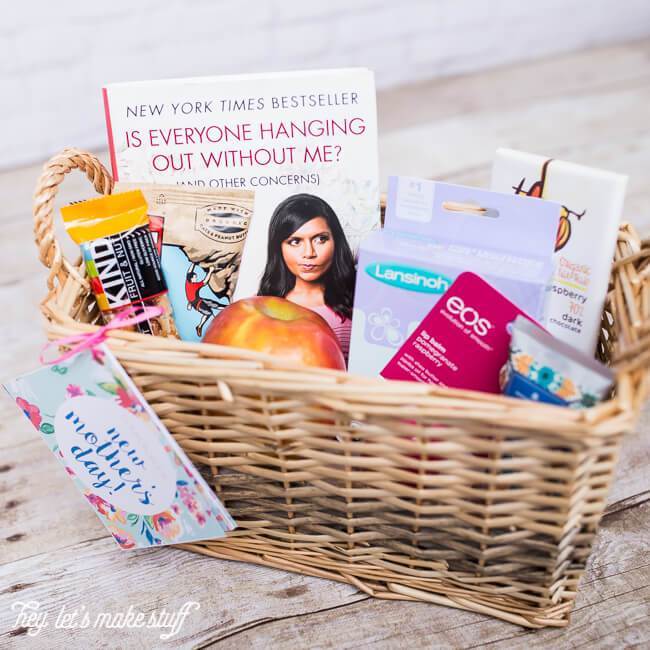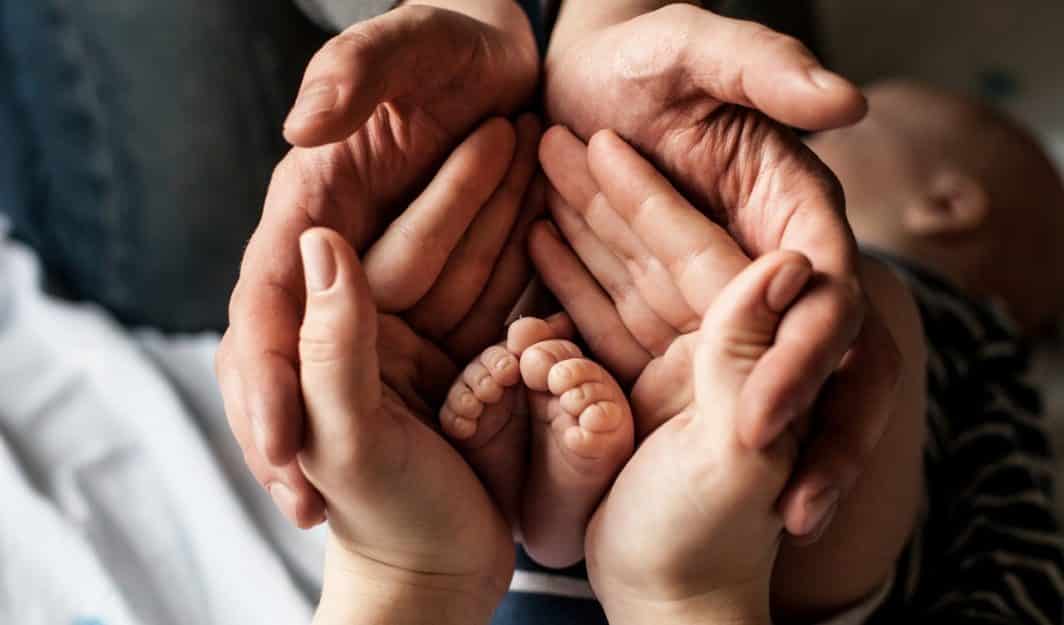Your friend or even a family member just had his/her first kid but you have no idea what to get them. Although, it’s always easy to go the generic way but not too fun. They might probably end up having ten water bottles in their house. Now, what do you do?
GIFTS FOR NEW PARENTS
#1. ELECTRIC NAILS TRIMMER:
This is a really nice gift idea that most people do not consider. A baby’s nails get really long and sharp sometimes. How do you want to trim it? An electric trimmer could help. They can have fun with their kids while they trim their nails.

#2. FOOD MAKER:
Instead of getting the baby food, you can get them a homemade food maker. It is basically like a mini food processor with an attachment. Whenever the baby is hungry there’s always an option of making fresh meals that the baby will enjoy. Prepacked foods aren’t always the best.
#3. NOSE SNOUT SUCKER:
When babies get sick, it is always uncomfortable for the babies and even their parents. The baby has a cold and how do you want to get the snout out? Then this should suffice. Major help for moms.
#4. BABY DREAM MACHINE:
This helps the baby have a soothing night’s rest so the parents can too. It is a form of aromatherapy because it releases a cool mist that helps little baby fall asleep. When the machine is turned on, it produces soothing pink noise, red light, and night light.
#5. INSTANT POT:
One-pot dinners are really undermined. Parents love to take the edge off and make simple dinners because of the stress. Getting them an instant pot to make meals for not just themselves but the baby is an awesome gift idea.
BEST GIFT FOR NEW PARENTS
#1. NOISE CANCELLING HEADPHONES:
You can never go wrong with noise-canceling headphones. For a new mom or a new dad, this is paramount. When they are having late nights, the noise-canceling headphones would help.
#2. STERILIZER AND DRYER:
This is a fast, efficient, and sure win for every household. It is a good multitasker in general. Sterilizing, Drying, and storing anything you put in it like baby pacifiers, bottles, and all.
ADVICE FOR NEW PARENTS
#1. Always trust yourself:
Basically, first-time parents always have a whole lot to do. A lot of work and so little time. Trust in yourself, you are not a sucker at it. We were all rookies at a time. Although, you normally question yourself. But you’d get back at it. However, for now, to succeed at it, stick to the basics, like;
- Love
- Touch
- Singing a lullaby
- Food/milk
- Patience
#2. Be kind to yourself:
Ask that “sinister judge” in your head to get lost. It’s ok to make mistakes. Be kind to yourself; trust me it’s the best way to get that satisfaction and happiness as new parents.
#3. Getting Enough Sleep:
Parenting is always fun but the late nights are no joke. Sleep deprivation can make new parents break down in tears at times. They are always edgy and easily irritated. Although, sleeping might look impossible because when you want to get some shut-eye, the baby might start crying. The best option, try and sleep when the baby sleeps so you can catch up on it.

NEW PARENTS GIFT BASKET
There are a lot of things you can put in a gift basket to make it awesome.
Basically, a new parents’ gift basket cannot be the same if it doesn’t contain;

1. Postpartum supplies like bottles etc.
2. A note of encouragement. They need all these words don’t you think?
3. Subscription for Hulu or even Netflix so they don’t spend their late nights obsessing about how late it is, or how tired they are.
4. Gift cards, wine, chocolate, or even flowers or any cute thing in general.
5. A DIY mini spa. Because to a mom, this is everything. Because she does not have the time to get her pampering. You could add shampoo, body wash/scrub, and other typical things you can get in a spa. Then she would be really happy.
6. Magazines, fun movies, or even books if these new parents are about being retro. Although some couples love retro and vintage. But some others love it digitalized.
7. Fruits and snacks basically. Like McDonald’s donuts etc.
Taking Care of a Newborn
If you haven’t spent much time around infants, their fragility might be frightening. Here are a few fundamentals to keep in mind:
- Before handling your kid, wash your hands (or use a hand sanitizer). Because newborns lack a strong immune system, they are vulnerable to illness. Make certain that everyone who comes into contact with your kid has clean hands.
- Keep your baby’s head and neck supported. Either carrying your infant, cradle the head and support the head when carrying the baby upright, or laying your baby down.
- Never, ever shake your newborn, whether for fun or out of frustration. Shaking might result in brain hemorrhage and possibly death. If you need to wake your baby, don’t shake him or her; instead, tickle his or her feet or gently blow on a cheek.
- Check that your kid is properly secured in the carrier, stroller, or car seat. Any activity that could be overly rough or bouncy should be avoided.
- Keep in mind that your infant is not yet ready for harsh play, such as being jiggled on the knee or thrown in the air.
Soothing and bonding
Bonding, one of the most enjoyable aspects of newborn care, occurs during the sensitive period in the early hours and days following birth when parents form a close connection with their infant. Physical proximity can foster an emotional connection.
Attachment helps children develop emotionally, which influences their development in other areas, such as physical growth. Bonding can also be thought of as “falling in love” with your infant. Children thrive when they have a parent or other adult in their lives who unconditionally loves them.
Begin bonding with your infant by cradling him or her and gently caressing him or her in varied patterns. You and your partner can also take advantage of the “skin-to-skin” opportunity by holding your infant against your own skin while feeding or cuddling.
Infant massage may be beneficial to babies, particularly premature babies and those with medical issues. Certain types of massage may improve bonding and aid in the growth and development of infants. Ask your doctor for advice on books and videos on infant massage. However, keep in mind that babies are not as strong as adults, so massage your baby gently.
Babies typically enjoy vocal sounds like chatting, chattering, singing, and cooing. Your infant will most likely enjoy listening to music as well. Baby rattles and musical mobiles are also excellent ways to stimulate your baby’s hearing. If your baby is fussy, try singing, reciting poetry and nursery rhymes, or reading aloud while gently swaying or rocking your baby in a rocker.
Some babies are extremely sensitive to touch, light, or sound, and they may startle and scream readily, sleep less than expected, or turn their faces away when spoken or sung to. If this is the case for your child, keep noise and light levels low to moderate.
Swaddling is another soothing method that first-time parents should master. It works effectively for certain newborns during their first few weeks. Swaddling properly keeps a baby’s arms close to the body while allowing for some leg movement. It not only keeps a baby warm, but it also gives most babies a sense of security and comfort. Swaddling may also assist to reduce the startle reaction, which can wake a newborn.
Here’s how you wrap a baby in a swaddle:
- Spread out the receiving blanket, with one corner slightly folded over.
- Place the infant on the blanket, face-up, with his or her head above the folded corner.
- Wrap the left corner around the baby’s torso and tuck it beneath the baby’s back, passing under the right arm.
- Bring the bottom corner up over the baby’s feet and draw toward the head, folding the fabric down if it reaches too close to the baby’s face. Make sure not to wrap the wrap too tightly around the hips. Hips and knees should be turned out and slightly bent. Wrapping your kid too tightly may raise his or her chances of developing hip dysplasia.
- Wrap the right corner of the blanket over the infant and tuck it under the baby’s back on the left side, leaving only the baby’s neck and head exposed. To ensure that your infant is not too tightly wrapped, make sure you can slip a hand between the blanket and your baby’s chest, allowing for proper breathing. However, make sure the blanket isn’t too loose that it comes undone.
Babies should not be swaddled after the age of two months. Some newborns can turn over while swaddled at this age, increasing their risk of sudden infant death syndrome (SIDS).
Diapering Is Everything
You’ll probably decide whether to use cloth or disposable diapers before bringing your kid home. Whatever you choose, your child will need to change his or her diaper approximately 10 times per day, or approximately 70 times per week.
Make sure you have all of your supplies close at hand before diapering your baby so you don’t have to leave your infant unattended on the changing table. You will require:
- a fresh diaper
- screws and bolts (if cloth prefold diapers are used)
- ointment for diapers
- wipes for diapers (or a container of warm water and a clean washcloth or cotton balls)
Lay your baby on his or her back after each bowel movement or if the diaper is damp, and remove the soiled diaper. Gently wipe your baby’s genital area clean with water, cotton balls, a washcloth, or wipes. When removing a boy’s diaper, proceed with caution because exposure to air may induce him to urinate. To avoid a urinary tract infection, wipe a girl’s bottom from front to back (UTI). Apply ointment to prevent or heal a rash. Always remember to fully wash your hands after changing a diaper.
Diaper rash is a common source of concern. The rash is usually red and bumpy, and it will go away in a few days with warm baths, diaper cream, and some time out of the diaper. The majority of rashes occur because the baby’s skin is sensitive and is irritated by a damp or poopy diaper.
Try the following tips to prevent or heal diaper rash:
- Change your baby’s diaper frequently and as soon as possible after he or she has a bowel movement.
- Clean the area gently with mild soap and water (wipes might be unpleasant at times), then apply a thick coating of diaper rash or “barrier” cream. Creams containing zinc oxide are popular because they build a moisture barrier.
- If you use cloth diapers, choose detergents that are free of dyes and fragrances.
- Allow the baby to sleep undiapered for a portion of the day. This allows the skin to ventilate.
- If the diaper rash persists for more than three days or appears to be worsening, consult your doctor; it could be caused by a fungal infection that requires a prescription.
Bathing Fundamentals
You should bathe your kid with a sponge until:
- The umbilical chord is removed and the navel completely heals (1–4 weeks).
- The circumcision takes 1–2 weeks to recover.
In the first year, a bath two or three times per week is sufficient. Bathing more frequently may be drying to the skin.
Prepare the following items before bathing your baby:
- a clean, soft washcloth
- Baby shampoo and soap that are odorless.
- a gentle brush to massage the baby’s scalp
- blankets or towels
- a fresh diaper
- sanitized clothing
Baths with sponges
Choose a safe, level surface (such as a changing table, floor, or counter) in a warm area for a sponge wash. Fill a sink or dish with warm (not hot!) water if one is nearby. Remove your baby’s clothing and wrap him or her in a towel. Wipe your infant’s eyes with a wet washcloth (or a clean cotton ball) only, beginning with one eye and wiping from the inner corner to the outer corner. To clean the second eye, use a clean corner of the washcloth or another cotton ball. With a moist washcloth, clean your baby’s nose and ears. Then, wet the cloth again and gently wash and pat dry his or her face with a little soap.
Next, lather up some baby shampoo and gently wash your baby’s head before rinsing. Wash the rest of the infant carefully with a moist cloth and soap, paying specific attention to creases under the arms, behind the ears, around the neck, and in the genital area. After you’ve cleaned those areas, make sure they’re dry before diapering and dressing your infant.
Bathtubs.
When your infant is ready, the first baths should be gentle and brief. If he or she becomes agitated, return to sponge baths for a week or two before attempting the bath again.
In addition to the items indicated above, include the following:
a baby tub filled with 2 to 3 inches of warmth — not hot! — water (to test the water temperature, feel the water with the inside of your elbow or wrist). An infant tub is a plastic tub that fits in the bathtub; it is a better size for babies and makes bathing more manageable.
To avoid chills, undress your infant and immediately immerse him or her in warm water in a warm atmosphere. Check that the water in the tub is no deeper than 2 to 3 inches and that it is no longer running. Use one hand to support the baby’s head and the other to guide the infant in feet-first. Gently drop your kid into the tub while speaking softly.
Wash his or her face and hair with a washcloth.
Massage your baby’s scalp gently using your fingers or a soft baby hairbrush, paying special attention to the area over the fontanelles (soft spots) on the top of the head. When rinsing the soap or shampoo from your baby’s head, cup your palm across the forehead to direct the suds away from the eyes and away from the sides. Wash the remainder of your baby’s body gently with water and a small quantity of soap.
Throughout the bath, gently pour water over your baby’s body to keep him or her warm. After the bath, quickly wrap your infant in a towel, being careful to cover his or her head. Hooded baby towels are ideal for keeping a freshly bathed infant warm.
Never leave your infant alone when bathing. If you must leave the restroom, wrap the infant in a towel and bring him or her with you.
Care for the Umbilical Cord and Circumcision
To avoid the wound from sticking to the diaper, the tip of the penis is frequently wrapped with gauze coated with petroleum jelly immediately after circumcision. After a diaper change, gently wipe the tip clean with warm water, then add petroleum jelly to the tip to keep it from sticking to the diaper. Redness or irritation of the penis should recover within a few days, but if the redness or swelling worsens or pus-filled blisters form, infection is likely and you should contact your baby’s doctor right once.
It is equally critical to care for newborns’ umbilical cords. Some doctors advocate swabbing the region with rubbing alcohol until the cord stump dries up and falls off, which normally takes 10 days to 3 weeks, while others advise leaving the area alone. Consult your child’s pediatrician to find out what he or she prefers.
The navel area of an infant should not be submerged in water until the cord stump has fallen off and the area has healed. The cord stump will change color from yellow to brown or black until it breaks off – this is natural. If the navel area becomes red, or if a foul odor or discharge develops, contact your doctor.
Your Baby’s Feeding and Burping
You may be perplexed as to how frequently you should feed your newborn, whether by breast or bottle. In general, newborns should be fed on demand — anytime they appear hungry. Your infant may cue you by wailing, placing his or her fingers in his or her mouth, or sucking.
A newborn baby requires feeding every 2 to 3 hours. If you’re breastfeeding, let your infant nurse for 10–15 minutes at each breast. If you’re formula-feeding, your infant will most likely consume 2–3 ounces (60–90 milliliters) per feeding.
Some infants may need to be awakened every few hours to ensure that they are getting enough to feed. If you need to wake your newborn frequently or if your baby isn’t interested in eating or sucking, contact your baby’s doctor.
So, if you’re formula-feeding, it’s simple to see if your kid is receiving enough to eat; if you’re nursing, it’s a little more difficult. If your baby appears satisfied, has six wet diapers and many stools each day, sleeps well and gains weight on a regular basis, he or she is probably eating enough.
Another positive indicator that your baby is getting enough milk is if your breasts feel full before feeding and less full after feeding. If you are concerned about your child’s growth or eating schedule, consult with your doctor.
Babies frequently swallow air during feedings, which can cause them to be fussy. Burp your baby frequently to help prevent this. If you bottle-feed, try burping your baby every 2–3 ounces (60–90 milliliters) and every time you switch breasts if you breastfeed.
If your baby is gassy, has gastroesophageal reflux, or appears irritable while eating, consider burping him or her after every ounce of bottle feeding or after 5 minutes of nursing.
Try these burping techniques:
- Maintain your baby’s head on your shoulder while holding him or her upright. Support your baby’s head and back with one hand while softly patting the back with the other.
- Place your infant on your lap. Support your baby’s chest and head with one hand by cradling his chin in the palm of your hand and resting the heel of your hand on his chest (be cautious to grab his chin, not his throat). With your other hand, softly touch your baby’s back.
- Place your baby on your lap, face down. Support your baby’s head, ensuring sure it is higher than his or her chest, and pat or rub his or her back gently.
- If your baby hasn’t burped after a few minutes, alter the baby’s position and try burping for a few minutes more before feeding again. When feeding time is done, always burp your baby and keep him or her upright for at least 10–15 minutes to avoid spitting up.
Sleeping Fundamentals
As a new parent, you may be startled to hear that your newborn, who appears to require your attention at all hours of the day, actually sleep for 16 hours or more!
Newborns normally sleep for 2–4 hours at a time. Expect your baby to wake up every few hours if he or she hasn’t been eaten in the previous four hours. Babies’ digestive systems are so little that they require food every few hours and should be roused if they haven’t been fed in the previous four hours (or more often if your doctor is concerned about weight gain).
When can you anticipate your kid sleeping through the night? Many babies sleep through the night (between 6–8 hours) by 3 months of age, but it’s not a cause for alarm if yours doesn’t. Babies, like adults, must develop their own sleep patterns and cycles; therefore, if your newborn is gaining weight and appears healthy, don’t be discouraged if he or she hasn’t slept through the night by 3 months.
To lessen the danger of SIDS, it is critical to always place babies to sleep on their backs (sudden infant death syndrome). Other safe sleeping practices include not using blankets, quilts, sheepskins, plush animals, or pillows in the crib or bassinet (as they can suffocate a baby); and sharing a bedroom (but not a bed) with the parents for the first 6 months to 1 year. Also, alternate your baby’s head position from night to night (first right, then left, and so on) to avoid the development of a flat spot on one side of the head.
Even if you are nervous about handling a newborn, you will develop a routine and be parenting like a pro in a few weeks! If you have any questions or concerns, ask your doctor for resources to help you and your baby grow together.
New Parents FAQ’s
What problems do new parents face?
Lack of sleep, little or no sex, and conflict over shifting new roles are just a few of the relationship difficulties that new parents nearly uniformly mention. However, experts agree that these issues are solvable and that one important method – communication — can help.
What do first time parents need?
Begin with 5 to 10 long-sleeved onesies, 5 pairs of soft cotton pants, some short-sleeved tops, baby socks, nightgowns or pajamas, and bibs. Once you’ve determined the outfits your baby feels most at ease in, you can add more to his or her closet.
What is the hardest stage of parenting?
Forget the terrible twos and be ready for the dreadful eights, according to recent research, parents have chosen age 8 as the most challenging age to parent. Many parents are undoubtedly surprised that age eight is the most difficult year, especially because parents questioned considered age six to be easier than they imagined.



